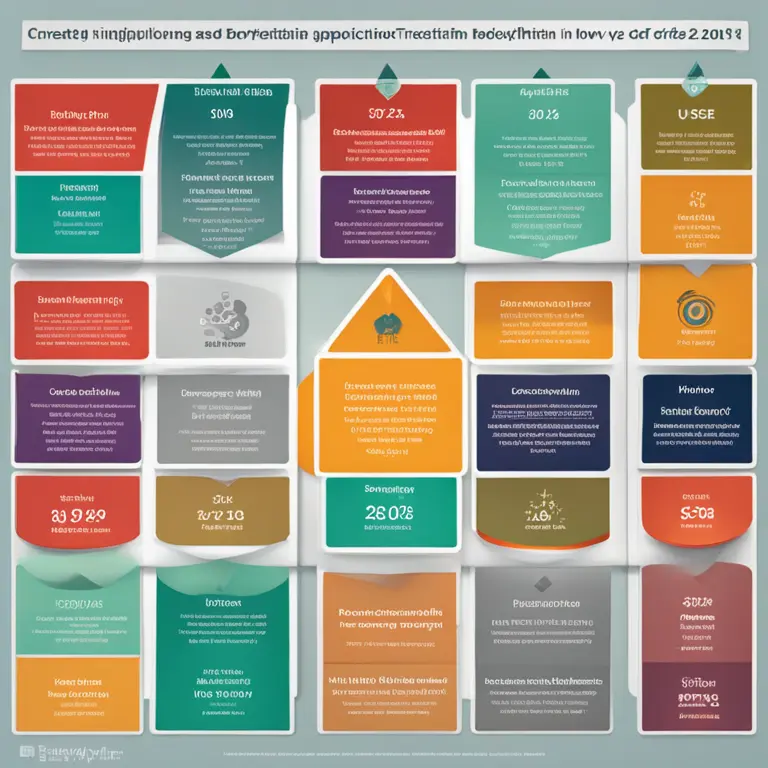
The Meaning of Biorhythms: Life's Natural Cycles
Discover what biorhythms are and how these innate cycles can influence your daily life, well-being, and personal potential.
article by Adrian Wallace
Introduction to Biorhythms
Biorhythms are thought to be natural cycles that govern human life. The concept suggests that from the moment of our birth, there are intrinsic patterns that affect our physical, emotional, and intellectual faculties. The theory of biorhythms dates back to the 19th century, and while not scientifically proven, it has found a place in holistic wellness practices. This article delves into the intricacies of biorhythms, shedding light on how these perceived cycles might play a role in our daily lives and potentially influence our decisions, performance, and overall well-being as we look towards 2024 and beyond.

The Three Primary Cycles
Fundamentally, biorhythms revolve around three primary cycles: the physical, emotional, and intellectual. The physical cycle, approximately 23 days long, is believed to influence our strength, endurance, and overall vitality. The emotional cycle, with a span of 28 days, supposedly determines our mood, creativity, and sensitivity. Lastly, the intellectual cycle, lasting 33 days, is said to affect our cognitive functions, including memory, alertness, and reasoning. Each cycle oscillates between periods of high, low, and critical phases, purportedly affecting our abilities and moods differently during these times.

Applications and Predictions
Enthusiasts of biorhythms claim that by tracking these cycles, one can predict periods of peak performance or potential slumps. As we approach 2024, some users may look to biorhythms for guidance in planning important events or making significant decisions. For instance, choosing a day when your physical and intellectual cycles are in a high phase might be ideal for job interviews or competitive events, while being aware of a low emotional phase could help in managing interpersonal conflicts more effectively.

Critical Days and Adjustment
Critical days are transitional phases within biorhythms when an individual moves from a high to low period or vice versa. These are believed to be times of increased vulnerability or risk and may be marked by uncertainty or instability. By being conscious of upcoming critical days, individuals may take precautions or minimize potential negative outcomes. Adjusting schedules, allowing for extra rest, or approaching tasks with heightened awareness during these days can be a strategy for those who follow biorhythmic patterns.
Modern Perspectives on Biorhythms
While the scientific community largely dismisses biorhythms as lacking empirical evidence, the concept persists in various circles. In the age of personalized wellness and self-optimization, biorhythms could be seen as a means of attuning more closely to one's body and mind. The advent of apps and online calculators has made tracking these cycles more accessible, inviting individuals to explore potential correlations between their rhythms and life occurrences as they navigate the coming years.
Skeptical Take on Biorhythms
While it's important to consider that biorhythms are not supported by rigorous scientific research, examining one's own patterns of energy and alertness can still offer personal insights. Whether or not one attributes these observations to biorhythms, being mindful of one's periodicity in various aspects of life could foster better self-understanding and growth. As we look to astrology and other practices for self-discovery, a skeptical yet open approach to biorhythms can be a complementary aspect of this journey.
Published: 1/30/2024
Modified: 1/30/2024
More predictions
Come back here soon to learn more about yourself and your future


The Harmony of Biorhythm Compatibility: A Guide
Discover how biorhythm compatibility can influence personal relationships and overall well-being in this comprehensive guide.


Biorhythm Compatibility: The Sync of Life Rhythms
Discover the role of biorhythm compatibility in relationships, and how syncing life rhythms can influence personal connections.


Birthday Biorhythm Compatibility: Key to Harmonious Relations
An insightful guide into how birthday biorhythm compatibility influences personal interactions and relationships.